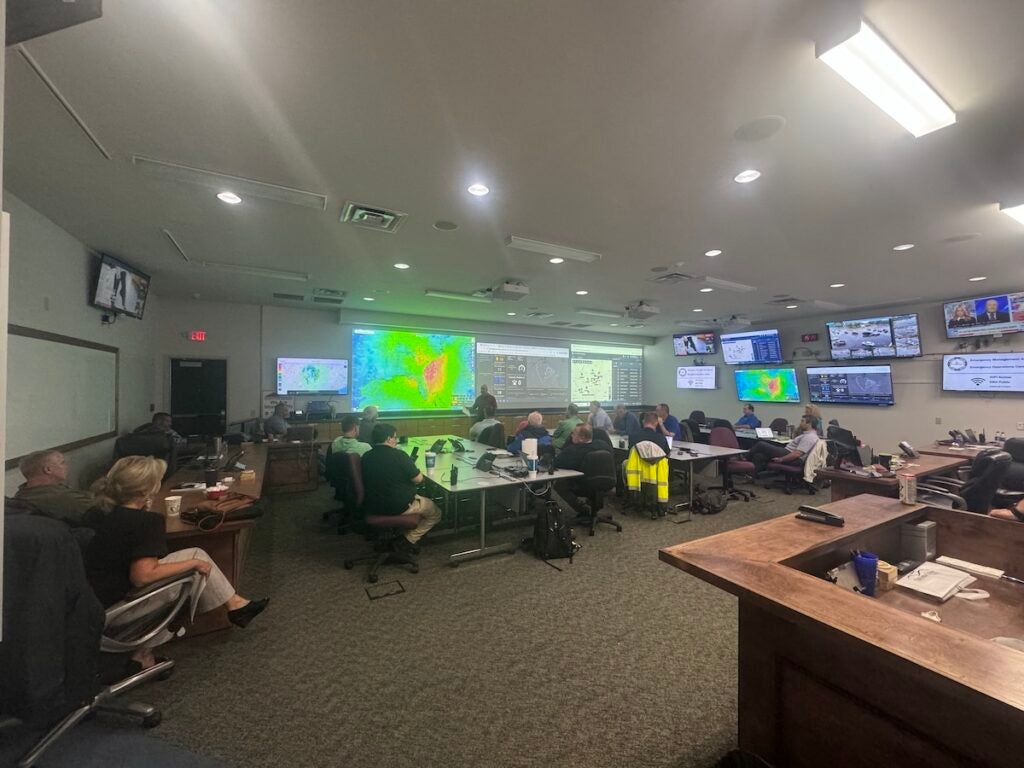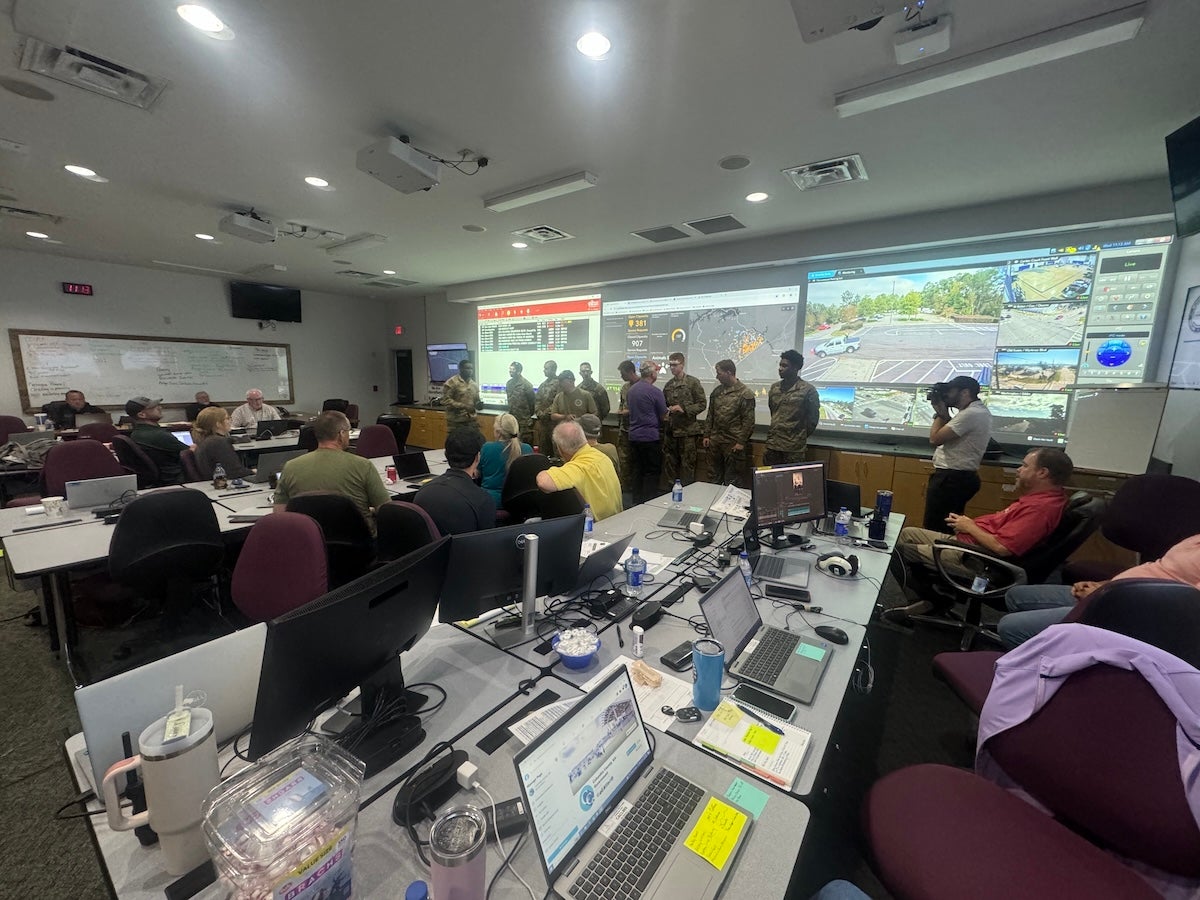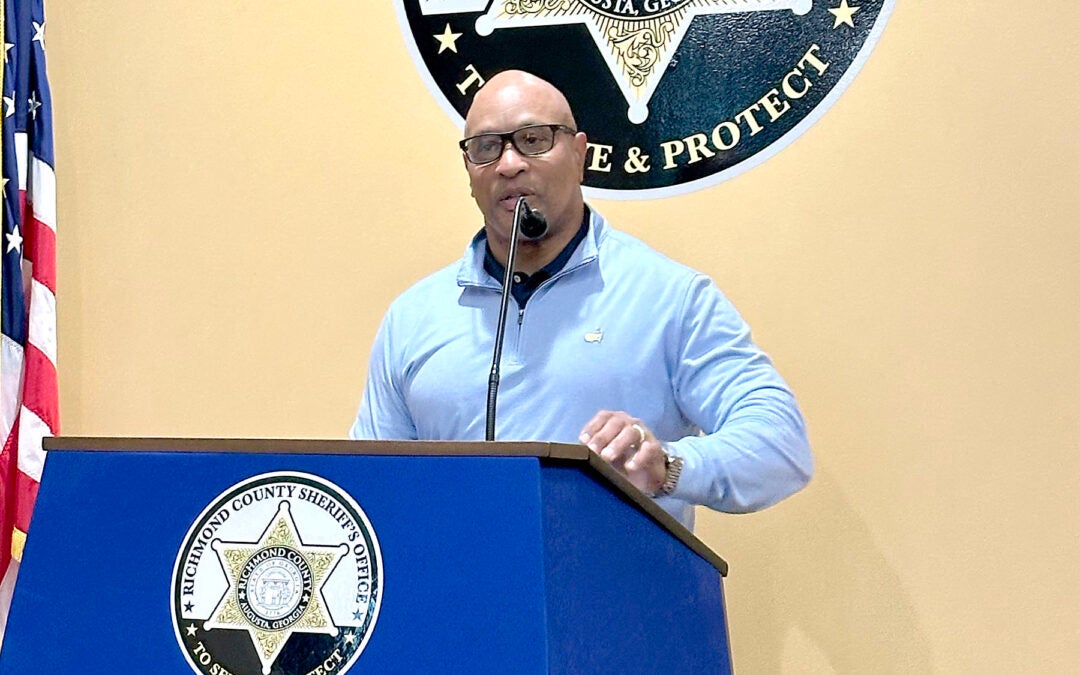Today marks one year since Hurricane Helene struck the CSRA and while the area is still recovering from that hit, Columbia County leaders are reflecting on that time, the aftermath and what they learned to prepare for the future.
Preparing ahead of the hurricane
When it came to preparing for Hurricane Helene, Shawn Granato, Columbia County Emergency Management Agency director, said Columbia County is always in a state of readiness and there wasn’t much more that could’ve been done in preparation.
“Filling generators, getting word out to the people, making sure we have a variety of communications,” Granato said. “Redundancy in the power supply, broadband, all of that. We do that routinely all the time, so when it comes to an emergency, we don’t have to flip out and do it at the last minute. That’s one thing we like to promote out of this office, normal operations during emergency conditions.”
However, what nobody expected was for Columbia County to take a direct hit from Hurricane Helene. Granato said nobody realized what was happening until a few hours before it hit the CSRA because all the models in the days leading up to it had it the storm hitting around Atlanta.
READ MORE: Photostory: Hurricane Helene in pictures
“Two or three days before we watched just like everybody else does, what can we do to make sure we are just a little bit more prepared than we were the day before, the time before. I would say we were as ready as we could be,” Granato said.

EMA wasn’t the only department that had to prepare ahead of the storm.
To ensure Columbia County didn’t lose water during the storm, Stacey Gordon, Water Utility Services division director, said they followed their normal procedures to prepare ahead of Hurricane Helene. This included filling up vehicles and generators, charging radios, manning the wastewater facilities overnight and sending certain personnel members home with county vehicles.
The Information Technology Department did a lot of preplanning, which involved working with other departments to figure out plans for if a department had to relocate or work remotely, said Division Director Michael Blanchard.
READ MORE: Savannah Rapids Pavilion damaged during Hurricane Helene
“Interestingly enough, with some of our relocation planning we had said Savannah Rapids Pavilion may end up being a continuity site,” Blanchard said. “That wouldn’t have been possible this time around. So, you have to do a lot of planning for other sites. We’ve got that paperwork planning we have to do.”
Blanchard added that his department also makes plans for the county infrastructure and that these plans happen years in advance. This is due to having to go through procurement regulations.
“You can’t just go out and buy a generator,” Blanchard said. “It’s something you’ve, because we follow all the procurement regulations. We’ve got to, you have to size it to make sure you’re buying the right type of generator for your needs, go through the procurement process, you get it installed and then you have to go into a constant cycle of testing and maintenance.”
Having these generators was crucial because the county data center, which houses the servers used by the county, and broadband utility never lost power, Blanchard said.
“We have generators at the broadband towers and then there’s some other broadband sites that don’t have a tower that are called nodes,” Blanchard said. “All but one of those have a generator and we’re working on getting one for them.
For the Engineering Services Division, Kyle Titus, the division director, said his department overseas Roads and Bridges, Traffic Engineering and Operations, Stormwater Operations and more. Each department made sure to prepare for the storm. Road and Bridges ensured all the trucks, chainsaws and special equipment were fueled up and ready to go. For Traffic Engineering and Operations, they fueled up generators so they could power up traffic signals were not destroyed and had just lost power. When it comes to the Stormwater Department, they visited sites that tend to get clogged up and ensured the area was clear to avoid any flooding issues.
READ MORE: Widespread damages found in Columbia County following Helene
The night Helene hit and the aftermath
The Friday before Hurricane Helene, Granato and many other Columbia County division directors were at the Columbia County Emergency Operations Center (EOC) waiting to see what would happen. As for what it was like at the EOC that night, Granato said the power and communications went out a few hours before Helene hit, which meant they also lost connection with the National Weather Service.
“We just kind of waited and really, when the building was shaking, we were just like everybody else, just in here waiting for everything to happen,” Granato said. “I think it’s fortunate everybody was at home and that it happened overnight because then that gave us the ability to go out at 6 a.m. as soon as it light (out). Our eyes were as big as saucers as everybody else’s were. Rather than it happen at 2 p.m. or 5 p.m. and then go over nightfall, that gives you a whole other day of everybody not being able to see what’s going on. The fact that it happened overnight, the fact that schools were out, the fact that everybody was at home I think made it better because nobody was rushing to get home.”
Granato said it got dangerous enough at one point that Columbia County Fire Chief Jeremy Wallen called a cease to operations. During the storm, an engine truck, ambulance and deputy patrol car were damaged.
“When we walked out back (after the hurricane), there was a giant tree and root ball literally as high as (the EOC) that (was) tore up, literally pushed over. There was a couch from a restaurant up the street that landed out here in our back yard. It was an interesting night and when we opened the doors and looked, this was going to be a big one.”
County Manager Scott Johnson said he felt the county responded very well to hurricane Helene considering it was the largest and most devastating storm to ever hit the CSRA.
READ MORE: Trump, Kemp present united front at storm appearance
“For our department heads and employees to be able to respond as quickly as they did, for us to get roads open as quickly as we could to get ahead of Georgia Power, to have a plan, to have all of our contracts pre-negotiated and everything was in place, ready to go, I think we responded as well as any community could have,” Johnson said.
For the Water Utility Department, a major task was making sure the county didn’t lose water following the storm. Gordon said it was difficult, but they were successful in preventing it from happening.
“One of the things that happened, with the loss of power, we typically, we don’t have an automatic transfer switch down at our raw water pump station, so we couldn’t get to it,” Gordon said. “We were a little nervous for a while, but Roads and Bridges and our guys combined as a team, and they went down and cleared a path for getting down to the raw water pump station and get everything back and running on generators.”
For Blanchard’s departments, he said while there was a lot of work after Hurricane Helene, it wasn’t as bad as expected. They didn’t have to reconstruct anything, and staff members were able to check and replace damaged equipment during the time county offices were closed in the immediate aftermath.
“Nobody was kept from doing their job after the emergency because they didn’t have technology in hand,” Blanchard said. “Of course, with the situation with our generators and our broadband utility, I can’t credit county leadership enough for the foresight they had all those years ago to get their own broadband utility. Because we were up and running and we essentially had control over all those resources. It was all underground…our underground fiber optics saved the day. Our generators saved the day, and we did keep all of our sites manned 24/7.”
In the time after the hurricane, Blanchard said the departments under Technology Services all worked together. The GIS Department worked to create maps and the IT Department did whatever was needed and thankfully, broadband continued working for the county.
“Our phones all worked,” Blanchard said. “The disaster scenario that they thought was going to be, ok phones aren’t going to work, and we’re going to lose access to everything and trying to bring systems back online and fortunately that wasn’t the case. A lot of preplanning that went into that to make sure we weren’t so heavily impacted after the fact. I can’t say enough good things about the people I’m privileged to work with. The radio communications was right there, our towers stayed up, those broadband connections were all in place and we didn’t have any major issues related to communications lapses and given everything that happened, that was a miracle.”
After Hurricane Helene hit, Titus said the most important thing was getting the roads cleared.
“We sent a lot of crews on the Roads and Bridges side home with their trucks, with chainsaws in their trucks,” Titus said. “So, they were able to either come straight into work or if they couldn’t, they were able to start cutting their way into work and clearing the right of way, going and picking up other crew members to help out and assist.”
For the Traffic Engineering and Operations department, the main difficulty faced was that many of the traffic signals were destroyed. But they focused on getting generators to the signals that were operable so they could come back on as soon as possible.
Stormwater employees went around to see what roads needed to be repaired, whether that was from overtopping or damage from overtopping that happened during the storm.
“Their top priority was to get the roads reconstructed or repaired,” Titus said. “Once that was done, they then start making pond repairs. There were several sinkholes that formed during the storm, so identifying were those were and making repairs in order of priority based on safety, where people would be driving or walking the most, those are the ones we had to repair, we had to get them safe or some safety fence around them and then make repairs.”
The debris cleanup process
Titus oversaw debris removal operations for Columbia County, which he called a “unique experience.” One of the first things he did was create a tracking system to track the progress of where they were in debris removal, how much had been removed each day and more.
He also ensured the debris removal company had all the necessary resources, with one of the biggest ones being the county’s GIS Department.
“We fully engaged our GIS Department who was able to do map out what roads were blocked, what roads were partially removed, one lane open, what roads were fully open,” Titus said. “Then (we) also mobilized my entire stormwater compliance department and road construction department who couldn’t do their normal jobs. I mobilized them to start identifying and designating what had been done. They would basically all day, every day, ride roads and identify what had been cleared, what was still blocked so that they could send those updates to GIS. We had a real-time map working at all times that the contractor could access and say hey these roads are clear, or these roads still need attention.”
In the end, Titus said there were 3.8 million cubic yards of debris removed from the right-of-ways in Columbia County.
“If you want to put that into perspective, if you were to cover an entire football field, end zones included. It would be enough debris to cover an entire football field the height of the World Trade Center 1, which is 1,776 feet,” Titus said.
Preparing for future storms
When it comes to future storms, Granato said one thing residents can do is be prepared to not be stuck at home and be prepared in case any emergencies arise, and first responders are unable to get to the caller.
“Because as chief had to shut down first responders, we tell everybody, 3,5, 7 days, be prepared. We can’t get to you,” Granato said. “We couldn’t. It took us 3 or 4 days just to clean the roads to one lane for emergency vehicles.”
Granato highly recommends that community member have alternate sources of power in case the power is out for days or weeks again. An alternative power source is also important for those who have medical equipment
“One message I would love to give to people is to stay at home. When we tell people to stay off the roads for two or three days, stay off the roads for two or three days,” Granato said. “People ran out of gas looking for gas because there wasn’t any gas. They shouldn’t have left their houses to look for gas. So, stay home.”
Gordon said that for his department is purchasing larger batteries to store and use so the run time on tanks will be longer. They are also ordering more generators and bypass pumps.
“We’ve budgeted for generators, not at key locations that are automatic transfer, they’re manual transfer. So, we’ve budgeted to go and change those out to automatic transfer, so we don’t have to have a clear path to get to them or someone have to go down and start those up.”
When it comes to preparing for future storms, Blanchard there are two phrases in his world that are important: redundancy and resiliency. For redundancy, he said it’s important for the county to have multiple backups in case something happens to one of the backups. The resiliency, he said, comes from all the planning and making sure the infrastructure is strong.
For Titus, he said the biggest lesson learned was for the county to get involved early on. At the start of the clean-up, he said the county allowed the contractor to steer them in the best approach, but when that wasn’t working, he got involved.
“Once I got involved, I was able to add some structure and continuity to the plan,” Titus said. “It was a huge team effort. That was probably the biggest thing. The next biggest thing was how much we depend on our teams and people to go above and beyond their normal call of duty to do whatever it takes to get the job done, was pretty remarkable. I think the wheel and the fortitude of your average person, you really know what it is until their truly tested. And we were at the county. I can’t think of one person that ever said that’s not my job or I don’t want to do that. everybody buckled down and dove in with both feet to do whatever it took to get us out of that mess.”
Johnson agreed that the teamwork between all departments was very important. He said the way the Columbia County organization chart is set up is as a circular chart, not a top-down one.
“That organization chart really speaks collaboration,” Johnson said. “It’s how these departments work together on a daily basis. Then when it’s a crisis or emergency, it’s even more important for everyone to work together without going through their boss to ask their boss if their boss can do something. It’s department heads working with department heads, directors working with other directors. I just think we were set up for it well and it think it worked well. I think all these department’s working together is exactly what we wanted and intended.”














